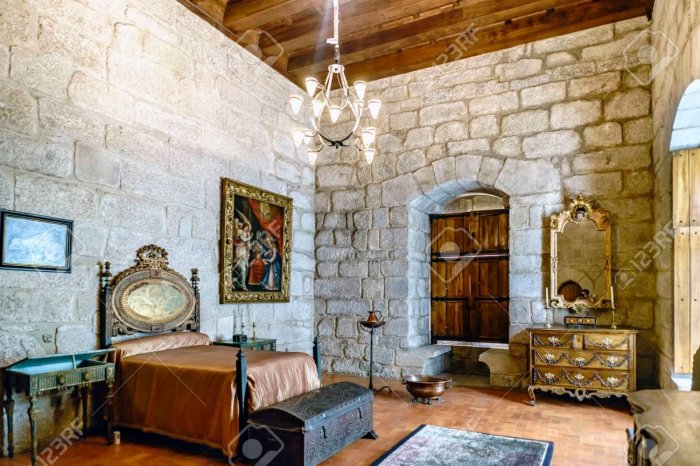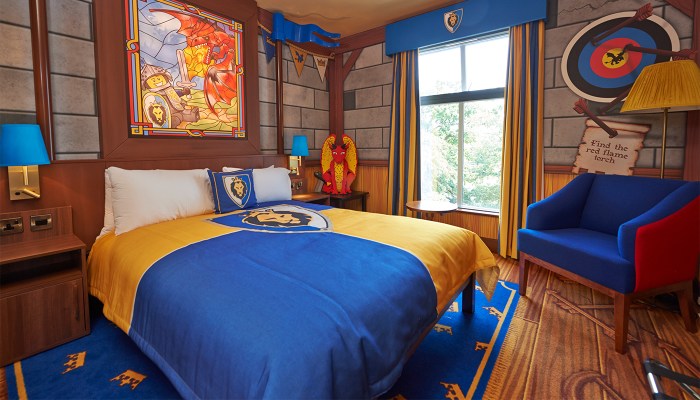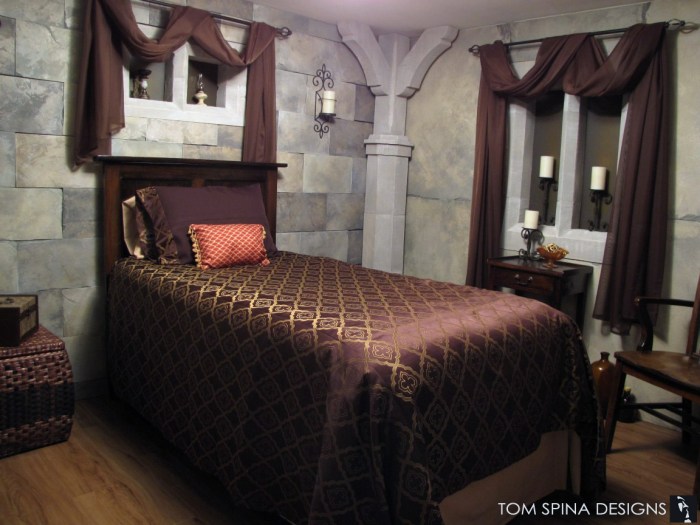Step into a world of chivalry and enchantment with a medieval castle and knight themed girls’ bedroom. This captivating design concept transports your little princess to a time of brave knights, majestic castles, and magical adventures. By incorporating architectural elements, colors, and furnishings inspired by the medieval era, you can create a space that fosters her imagination and sparks her dreams.
From the grand stone walls to the intricate tapestries, every detail in this enchanting bedroom evokes the spirit of the Middle Ages. Let your daughter’s room become a haven where she can don her imaginary armor, wield her toy sword, and embark on quests that will inspire her creativity and sense of wonder.
Design Inspiration
Medieval castles, with their imposing stone walls, grand halls, and intricate architectural details, provide a wealth of inspiration for creating a bedroom that transports you to a bygone era.The history of medieval castles dates back to the 9th century, when they were built as defensive structures to protect against invaders.
Over time, they evolved into symbols of power and prestige, showcasing the wealth and authority of their owners.Notable examples of medieval castles include:
- Windsor Castle in England, with its iconic Round Tower and State Apartments.
- Neuschwanstein Castle in Germany, known for its picturesque setting and elaborate interiors.
- Château de Chambord in France, renowned for its vast size and intricate Renaissance-style architecture.
Incorporating medieval architectural elements into a bedroom design can create a sense of grandeur and timeless elegance. Stone-like textures, arched doorways, and tapestries adorned with heraldic symbols can evoke the ambiance of a medieval castle.
Color Palette
Medieval castles and knightly attire were characterized by a distinct color palette that reflected the values and aesthetics of the era.
The primary colors used were:
- Red: Symbolized strength, passion, and courage.
- Blue: Represented nobility, loyalty, and faith.
- Green: Signified growth, prosperity, and nature.
- Yellow: Associated with wealth, joy, and wisdom.
- Gold: Embodied power, royalty, and divinity.
Incorporating these colors into the bedroom decor can create a sense of authenticity and immerse the child in the medieval era.
Textiles and Fabrics
In medieval times, textiles and fabrics played a crucial role in both fashion and home decor. They were used to create garments, tapestries, and bedding, and the choices of materials, patterns, and colors reflected the social status and personal preferences of the inhabitants.Natural
fibers such as wool, linen, and hemp were the most commonly used materials for textiles. Wool was particularly popular due to its warmth and durability, while linen was favored for its breathability and comfort. Silk, a luxurious fabric imported from the East, was reserved for the wealthy and nobility.Medieval
textiles often featured intricate patterns and textures. Tapestries, woven with colorful threads, depicted scenes from history, mythology, and everyday life. Embroidered fabrics adorned garments and household linens with geometric designs, floral motifs, and heraldic symbols.When incorporating medieval textiles into a bedroom design, consider using wool or linen curtains with embroidered borders.
Tapestries can serve as wall hangings or bedspreads, adding a touch of history and drama to the space. Bedding can be made from soft linen or wool, with decorative pillows featuring medieval-inspired patterns.
Lighting
In medieval castles, lighting played a crucial role in providing illumination and creating a comfortable ambiance. The primary sources of light were candles, torches, and oil lamps.
Candles were widely used due to their portability and ease of use. They were made from beeswax, tallow, or other animal fats, and provided a warm and flickering light. Torches, on the other hand, were more suitable for larger spaces and outdoor areas.
They were made by dipping bundles of straw, hemp, or wood in pitch or resin, creating a long-lasting flame.
Oil lamps were another common source of light, offering a brighter and more stable illumination. They were made from clay, metal, or glass, and fueled with olive oil, whale oil, or other flammable liquids.
In a medieval castle-themed bedroom, you can create a similar lighting scheme using candles, battery-operated torches, or ambient lighting. Candles can be placed on bedside tables, dressers, or in sconces on the walls. Torches can be used as decorative accents or to provide additional illumination in corners or hallways.
Ambient lighting, such as fairy lights or LED strips, can be used to create a soft and diffused glow.
Accessories
In the quarters of a medieval castle or knight, various accessories served both practical and decorative purposes. These items reflected the lifestyle, interests, and status of the occupants.
- Weapons and Armor: Swords, shields, and other weapons were essential for knights’ protection and combat. Displaying them in the bedroom symbolized their military prowess and readiness.
- Tapestries and Hangings: Woven tapestries and embroidered hangings adorned castle walls, providing warmth, insulation, and a touch of elegance. They often depicted scenes from history, mythology, or religious themes.
- Candles and Lanterns: Before the advent of electricity, candles and lanterns provided illumination in medieval castles. Their flickering flames created a cozy and atmospheric ambiance.
- Pewter and Woodenware: Pewter plates, cups, and other utensils were common in medieval households. Wooden bowls and chests served as storage and decorative elements.
- Books and Manuscripts: Knights and noblewomen often possessed a collection of books and manuscripts, ranging from religious texts to chronicles and romances.
- Musical Instruments: Lutes, harps, and other musical instruments provided entertainment and relaxation in the evenings. They added a touch of culture and refinement to the castle atmosphere.
Outcome Summary
As you complete your medieval castle and knight themed girls’ bedroom, remember that the most important element is your daughter’s imagination. Encourage her to play, explore, and create her own stories within this magical space. Let the room be a sanctuary where she can escape, dream, and grow into a confident and imaginative young woman.



